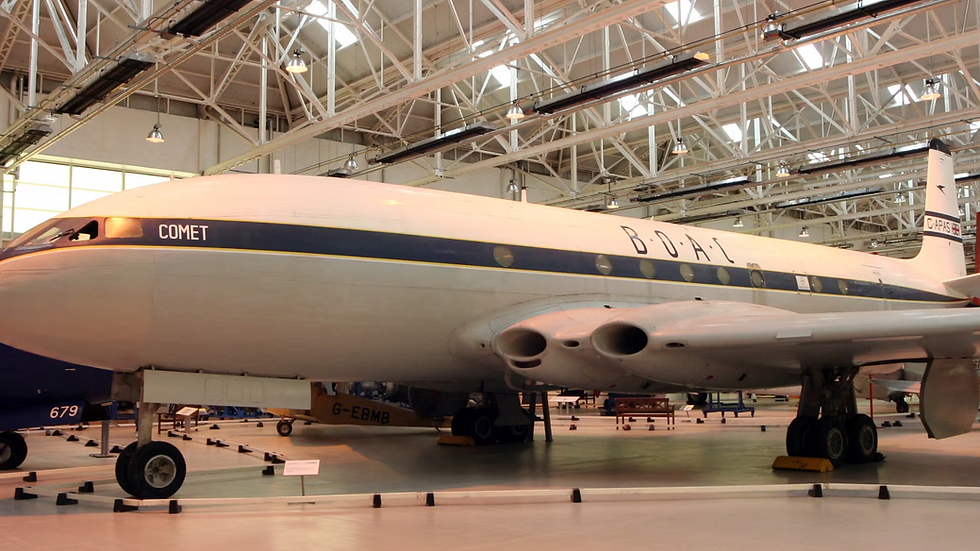A Look at the Comet: World’s First Commercial Jetliner
- Shashwat Dwivedi
- Apr 4
- 2 min read

When jet engines were first introduced in the late 1940s, the concept seemed like something pulled out of science fiction. The military of major countries around the globe were the first adopters of jet propulsion technology. The Second World War saw the earliest aircraft equipped with jet engine technology to take the skies, most notably the Me 262 flown by the Germans in 1944 and the British Gloster Meteor in final months of the war in 1945. It took some time to adopt the technology for the civil aviation sector. De Havilland brought out the world’s first commercial jetliner, the Comet.
In 1945, De Havilland was awarded a development and production contract to create a jet-powered commercial airliner, designated as the “Type 106,” and over the next few months, the concept saw work done and tests carried out on a mail-carrier with as few as 6 seats to a long-range airliner with 24 seats and a proposed cruising altitude of 40,000 feet. The initial proposals were so attractive that the British Overseas Airways Corporation (BOAC) submitted orders for 10 aircraft by the end of 1945.
One of the earliest obstacles faced by de Havilland was that there were no turbojet engine manufacturers in the world at that time that were working on design specifications for an engine with the power and fuel consumption requirements of the proposed jetliner. This meant that de Havilland had to work from scratch on both the development of the airframe and the engines, which in itself was a tough goal considering how jet-powered aviation was in its infancy.

In 1946, after requests from BOAC and de Havilland’s practicality, chief designer Ronald Bishop was convinced to finalise the plans for an expanded 36-passenger (four abreast with a central aisle) design. The wings were supposed to have a 20-degree sweep, and the aircraft would feature an unswept conventional tail section. The aircraft was designated the DH.106 Comet in December 1947.
The airliner had four turbojet engines incorporated into its wing roots near the fuselage, two on each side. This lent the plane a very gorgeous look with streamlined air intakes and organic-looking engines, although this design made it a little more difficult to service the engines compared to modern airliner designs with the engines hanging under-wing mounts of the aircraft.
The first Comet prototype flew in July 1949, and the second a year later, undergoing rigorous testing over the course of two years. The mainline series of Comets began appearing in 1952.
While the tag of the first jet airliner brought much fanfare, it also brought problems associated with any first-generation technology. On October 26, 1952, a BOAC Comet failed to take off from Ciampino Airport in Rome and ran into rough ground at the end of the runway. Although no one died and only two sustained minor injuries, the aircraft was lost. The next year, another Comet met with an accident in Karachi and became the first incident of fatalities in a jetliner. These early crashes were attributed to pilot error, but further investigation revealed how the wing profile of the aircraft led to a loss of lift. This was worked upon, then another crash two months later in India exposed more problems in the aircraft, such as metal fatigue.
The Comet continued to have a rocky career, but the lessons learned from it advanced aviation safety like no other aircraft.









